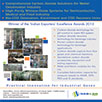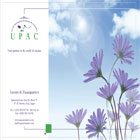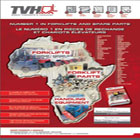

Organic Methods for grain storage
Posted on : Monday, 5th December 2016
Coverage — Sorghum is the third most important cereal crop grown in Uganda after maize and finger millet.
It is widely grown in the north and east. It particularly does well in drought-prone Karamoja, where it occupies more than 80 per cent of the total crop hectarage.
Sorghum is also grown in areas such as the Kigezi region, and on small scale in other parts.
Yields. Yields of up to 800 kilogrammes per hectare can be obtained from well-managed local varieties as compared to 5,000 kilogrammes per hectare for improved varieties.
Hybrid varieties can yield 25 per cent higher than the improved varieties.
Varieties. Local sorghum types are predominantly grown in Uganda. There are, however, a number of improved varieties such as Seredo, Serena, Dobhs Bora, Lulu D and Lulu Tall which have been developed.
The grain (threshed or un threshed) should be stored in a clean cool day facility free of rodents and storage pests.
Occasionally it should be sun-dried in order to reduce the incidence of storage pests during storage.
Storing the grain at higher moisture levels will lead to grain molding and increased incidence of storage pests and diseases.
Coverage — Sorghum is the third most important cereal crop grown in Uganda after maize and finger millet.
It is widely grown in the north and east. It particularly does well in drought-prone Karamoja, where it occupies more than 80 per cent of the total crop hectarage.
Sorghum is also grown in areas such as the Kigezi region, and on small scale in other parts.
Yields. Yields of up to 800 kilogrammes per hectare can be obtained from well-managed local varieties as compared to 5,000 kilogrammes per hectare for improved varieties.
Hybrid varieties can yield 25 per cent higher than the improved varieties.
Varieties. Local sorghum types are predominantly grown in Uganda. There are, however, a number of improved varieties such as Seredo, Serena, Dobhs Bora, Lulu D and Lulu Tall which have been developed.
The grain (threshed or un threshed) should be stored in a clean cool day facility free of rodents and storage pests.
Occasionally it should be sun-dried in order to reduce the incidence of storage pests during storage.
Storing the grain at higher moisture levels will lead to grain molding and increased incidence of storage pests and diseases.





























































